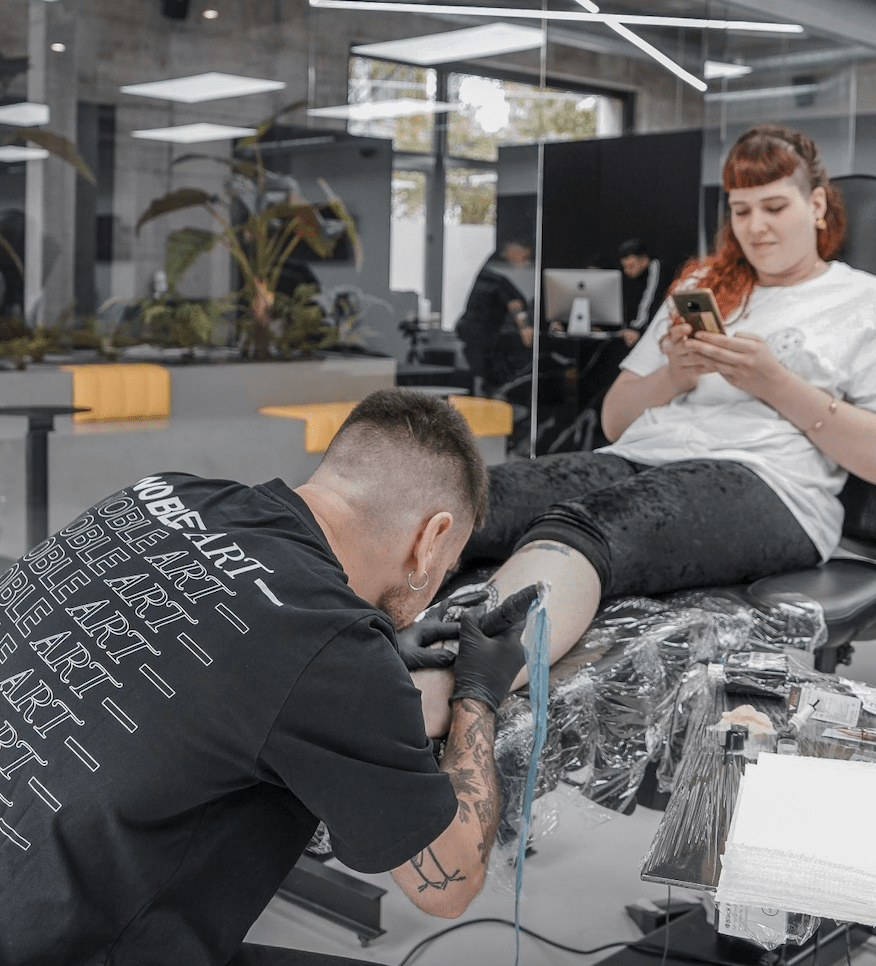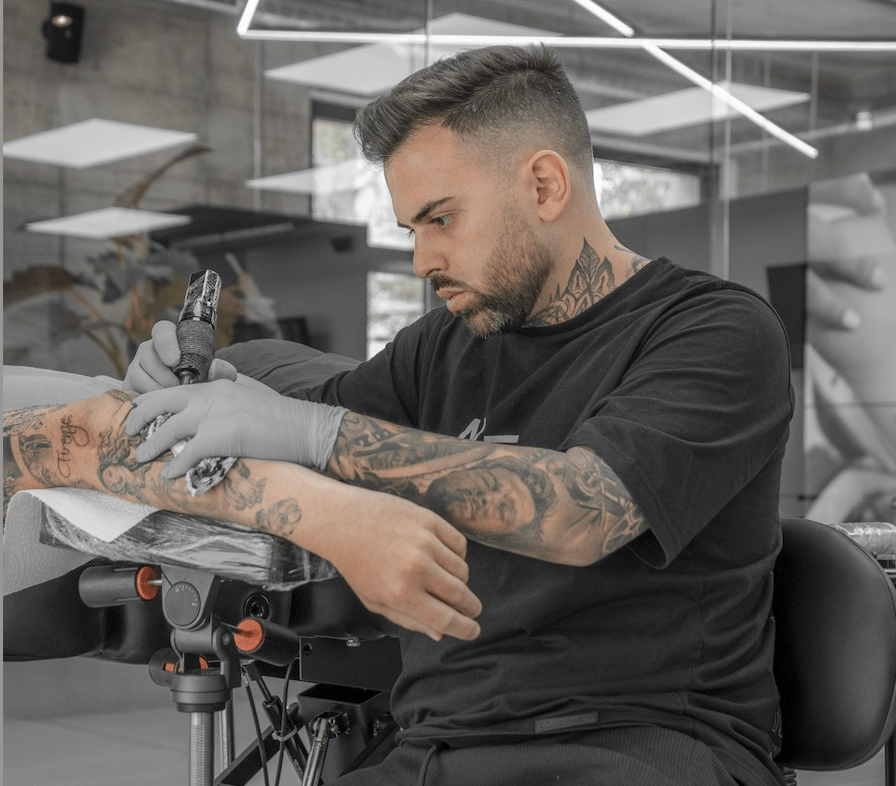Tattoo Pain Charts
These visual guides rank areas of the body according to their level of pain, which helps people choose locations according to their tolerance.
Generally, areas with more nerve endings, less muscle or thinner skin are considered more painful. For example, rib cage, spine and sternum tattooing are among the most painful because of their proximity to bone and lack of cushioning.
On the other hand, areas such as the calf or the outside of the shoulder are generally considered more tolerable, thanks to thicker skin and more abundant musculature.
Certain areas, such as the elbow tattoo, knee tattoo and armpit tattoo, are known for their intense discomfort. These locations combine sensitive skin with complex anatomy, making the experience more difficult.
Hand and finger tattoos also rank high on the tattoo pain scale, as the skin is thin and nerve endings abound in these areas.
Collarbone and shoulder blade tattoos can be especially uncomfortable for some, as the vibrations of the needle can travel along the bone, intensifying the sensation.
Unique locations, such as lip tattoos, often surprise people with their pain levels. Although the thin skin and nerve-rich area make them sensitive, the small size of lip tattoos usually shortens the duration of discomfort.
Conclusion on Tattoo Pain
By using a tattoo pain chart, clients can make informed decisions ; knowing what to expect helps people prepare physically and mentally for the tattoo process, ensuring a more satisfying and hassle-free experience.
Remember: we can tattoo you with anesthesia and without pain.
Come to your nearest NOBLE ART studio and we will give you all the information you need.




